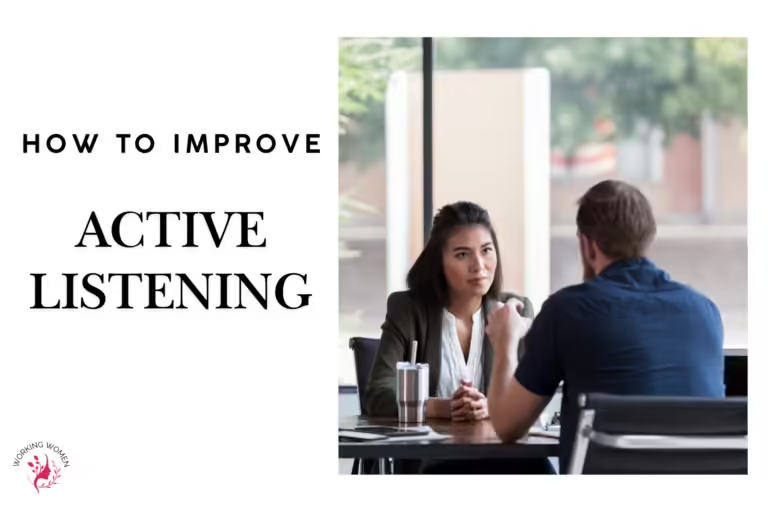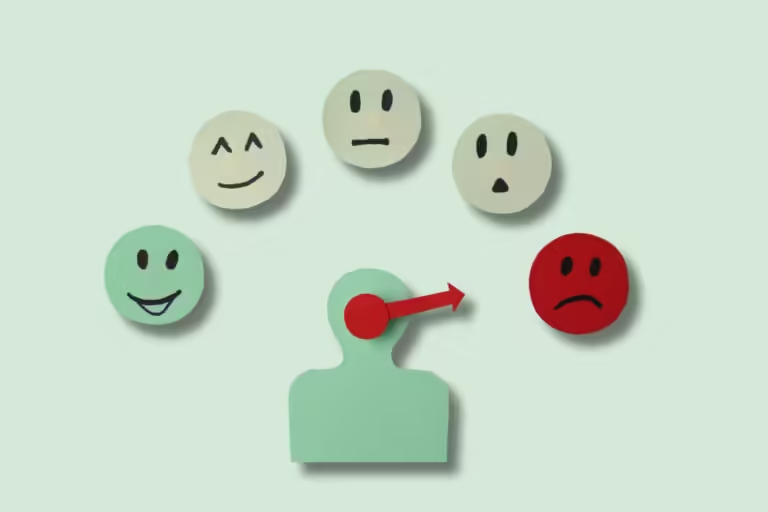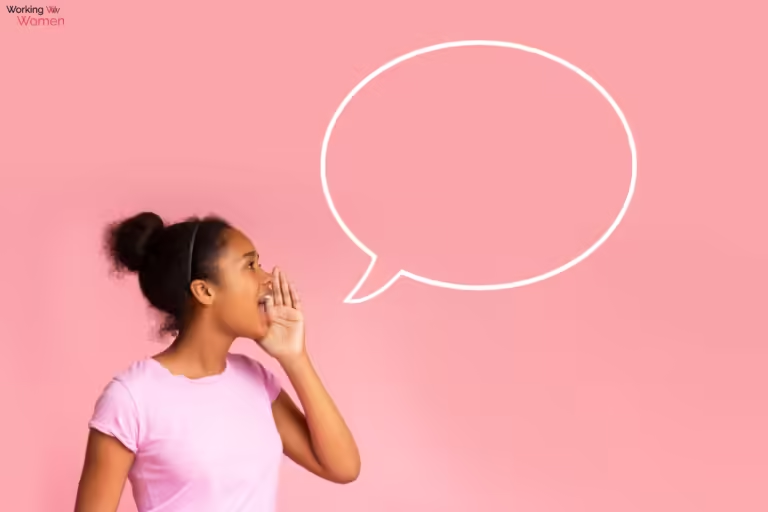Body Language Hacks: Make a Powerful Impression Every Time
Imagine two equally qualified women step up to give a presentation. Both have meticulously crafted their content and know their subject matter inside and out. Yet, one seems hesitant, her voice wavers, and she keeps fidgeting. The other stands tall, delivers her points with clarity, and maintains a composed, inviting presence. Undoubtedly, the second woman will leave a stronger impression, potentially influencing opportunities and how colleagues perceive her competence.
Sadly, many talented working women unknowingly sabotage their own success through subtle body language cues that project uncertainty rather than authority. This isn’t about faking it till you make it; it’s about harnessing the power of nonverbal communication to align your inner confidence with your outer presence.
In this blog post, we’ll dismantle these subconscious roadblocks and equip you with simple yet impactful body language hacks that will transform how you navigate the workplace and command the respect you deserve.
Body Language Hacks for working women
It’s not just about the words you speak, but how you carry yourself that truly shapes your impact. Body language is a powerful tool that can instantly elevate your presence in the workplace. From the way you stand to the smallest hand gesture, your nonverbal cues send a message.
Master these simple body language hacks to transform how you show up, exude confidence, and naturally command the respect you’ve earned.
Posture: The Foundation of Confidence
Posture is the cornerstone of your physical presence and sends immediate signals about how you view yourself and how others perceive you. A slumped posture with rounded shoulders suggests self-doubt, disinterest, or even a desire to minimize your presence.
Conversely, standing tall with your shoulders back and head held high is one of the most effective body language hacks to signal confidence, competence, and a readiness to engage.
How to achieve this power posture?
Imagine a string gently pulling the crown of your head towards the ceiling. Roll your shoulders back and slightly down, relaxing your chest. While seated, position yourself at the back of the chair with your spine straight, and feet flat on the floor, and avoid hunching over your desk.
Remember, practicing good posture takes conscious effort at first, but as it becomes a habit, you’ll project that inner confidence naturally. This simple body language hacks will fundamentally transform how you carry yourself, impacting both how others perceive you and your own self-assurance.
The Power of Eye Contact: Don't Look Away from Success
Eye contact is one of the most impactful body language hacks you can master. When used effectively, it establishes trust, shows attentiveness, and conveys confidence.
Aim for a balance maintain steady eye contact during conversations without staring. Looking away too frequently can signal nervousness or disinterest, while locking eyes too intensely might come across as intimidating.
Tips to Maintain a Perfect Eye Contact?
The 50/70 Rule: Try to maintain eye contact for 50% of the time when you’re speaking and 70% of the time when you’re listening. This shows engagement without becoming overbearing.
Look for Natural Breaks: When the other person pauses, briefly look away to nod, smile, or change your facial expression in response. This prevents a constant, unblinking stare. If you need to think or recall information, naturally break eye contact for a moment before re-engaging.
The Triangle Technique: Instead of focusing on one eye, shift your gaze between the person’s eyes and the bridge of their nose. This is less intense but still maintains connection. Slowly move between these points every 4-5 seconds for a natural feel.
Additional Tips
- Blink normally: Don’t feel you have to avoid blinking. It feel natural and give message that you are not staring.
- Practice: Get comfortable with eye contact in low-pressure situations like conversations with friends and family.
- Consider cultural differences: Be aware that some cultures have different norms about eye contact.
Remember, consistency is key with any body language hacks! The more you practice, the more natural and comfortable balanced eye contact will feel.
Master the Handshake: A Small Gesture, Big Impact
A handshake is often the first physical touchpoint in a professional encounter, making it a surprisingly powerful element of your body language. For women, a firm, confident handshake is essential for establishing credibility and projecting authority right from the start.
By focusing on body language hacks like your handshake, you can make a strong first impression. Practice a handshake that is neither limp and weak (signaling a lack of assertiveness) nor bone-crushingly aggressive.
Tips to Master workplace Handshake?
Firm Grip: Not too weak, but not bone-crushing. Imagine the firmness of holding a doorknob.
Web-to-Web Contact: Make sure the web of your hand between your thumb and index finger meets the other person’s.
2-3 Pumps: A short, firm up and down motion, two to three times.
Eye Contact: Maintain friendly eye contact throughout the handshake.
Smile: A genuine smile adds warmth and openness.
Additional Tips
- Initiate When Possible: Being the first to extend a handshake positions you confidently.
- Dry Hands: Discreetly dry sweaty palms before a handshake.
- Cultural Considerations: Be mindful of cultural norms – some cultures may have different handshake expectations or preferences for physical contact between genders.
- Adapt to the Other Person: If someone offers a weaker handshake, match their pressure to avoid being overpowering.
Invest a little time into mastering this body language hacks, and your handshake will convey confidence in every interaction.
Power of Open vs Close Posture
Think of your body language as either an invitation to engage or a barrier to connection. Crossed arms, legs tightly wound together, or hunched shoulders send subconscious signals that you’re closed off, disinterested, or even defensive. These closed positions can unintentionally undermine your message and rapport-building efforts.
Master these simple body language hacks: shift towards open body language by uncrossing your arms and legs, relaxing your shoulders, and using palms-up gestures when appropriate. This shift conveys receptivity, willingness to listen, and a sense of approachability, fostering stronger connections in the workplace.
Claim your Space: Become powerful Presenter
In the workplace, how you occupy space sends a powerful nonverbal message. Sadly, women can sometimes unconsciously “shrink” – making themselves smaller by hunching, taking up minimal space in a chair, or avoiding expansive gestures. Employ a few simple body language hacks to reclaim your rightful place and project confidence by owning your space.
During presentations, move around the stage naturally, use gestures that expand your presence, and stand tall. In meetings, sit with good posture at the table – avoid being relegated to the sides or corners. In male-dominated settings, don’t hesitate to claim your seat confidently and make your voice heard with a strong, clear tone.
Remember, the space you occupy is directly linked to how much space your ideas and contributions take up in the room. Master these simple body language hacks: shift towards open body language by uncrossing your arms and legs, relaxing your shoulders, and using palms-up gestures when appropriate.
This shift conveys receptivity, willingness to listen, and a sense of approachability, fostering stronger connections in the workplace.
the Power Pose: Your Secret Confidence Booster
The power pose might seem like pop-psychology, but research suggests there’s real science behind this body language hacks. According to Forbes Magazine this concept is still under debate, but this concept became popular when researcher Amy Cuddy told to TED audience about her research.
According to Amy Cuddy adopting expansive, dominant postures (think “Wonder Woman” with hands on hips), you trigger hormonal changes that enhance feelings of power and reduce stress. Another recent study revealed that power pose impact decision making.
Before an important meeting, presentation, or tough negotiation, take a few minutes in private to strike a power pose. Hold the pose for at least two minutes to maximize its impact. Popular options include standing tall with feet apart and hands-on-hips, sitting back in a chair with arms behind the head, or leaning forward with hands planted on a desk. The key is finding body positions that make you feel strong and assertive.
Remember, body language hacks aren’t about faking confidence; they help you tap into the confidence you already possess.
Combat Imposter Syndrom
Imposter syndrome, that nagging feeling of inadequacy that many working women experience, often manifests through our body language. Shoulders slumped, voice hesitant, we inadvertently project our internal doubts outwards.
The good news is, the relationship between body and mind is a two-way street. By consciously adopting confident body language hacks, you’re not just faking it; you’re signaling to your own brain that you are capable and deserving.
Stand tall, maintain eye contact, and use expansive gestures, these actions send a message of self-assurance that gradually shifts your internal perception as well.
Combatting imposter syndrome is a journey, and body language is a powerful tool to help you project the success you already embody within.
For deeper insights on body language, explore the work of Vanessa Van Edwards, author of the popular book ‘Captivate’ and founder of the blog ‘Science of People.
Conclusion
Body language isn’t about trickery or becoming someone you’re not. It’s about unlocking the powerful presence that already exists within you. These body language hacks are tools to amplify your voice, project the competence you’ve earned, and own your rightful place in the workplace.
Remember, small adjustments in your posture, gestures, and eye contact can lead to profound shifts in both how you’re perceived and how you perceive yourself.
Take charge of your nonverbal communication, and let your body language pave the way for the success you deserve!
FAQs
Eye Contact:
- Rolling eyes: A classic sign of dismissal and contempt.
- Staring: Aggressive and intrusive, signals dominance rather than respect.
- Looking away frequently: Displays disinterest and a lack of engagement.
- Looking down: Projects submissiveness or avoidance, not an equal exchange.
Facial Expressions:
- Scowling, frowning, or sneering: Conveys disapproval and negativity.
- Smirking: Suggests mockery or a dismissive attitude.
- Exaggerated expressions: Overly dramatic eye rolls or sighs signal disrespect and can belittle someone’s thoughts.
Posture and Gestures:
- Slouching or leaning back excessively: Projects disinterest and lack of care.
- Crossed arms: Creates a closed-off, defensive barrier.
- Pointing: Can be seen as accusatory and aggressive.
- Tapping feet or fidgeting: Suggests boredom and impatience.
- Turning away from the speaker: Dismisses the person and their message.
- Posture: Stand tall, shoulders back, head held high. Avoid slouching, whether standing or seated.
- Eye Contact: Maintain steady, engaged eye contact during conversations. Avoid staring or looking away too frequently.
- Smile: A genuine smile projects warmth and openness.
- Handshake: Offer a firm, confident handshake with web-to-web contact and a few pumps.
- Posture: Standing tall with shoulders back, seated with good posture projecting confidence and authority.
- Eye Contact: Maintaining steady eye contact during conversations shows engagement and respect.
- Smile: A genuine smile conveys warmth, approachability, and positive intent.
- Head Movements: Nodding in agreement shows active listening and involvement.
- Open Gestures: Using open hand gestures and relaxed arms invites connection.
- Mirroring: Subtly mirroring body language builds rapport and signals empathy.
- Leaning in: Leaning slightly forward towards the person shows interest and attentiveness.
- Fidgeting: Nervous movements like tapping feet, fiddling with objects, or hair twirling can signal anxiety and discomfort.
- Crossed Arms: Creates a defensive barrier, indicating closed-off or resistant attitude.
- Poor Eye Contact: Looking away, staring, or rolling eyes conveys disinterest, disrespect, or even hostility.
- Lack of Facial Expression: A blank face or forced smile suggest disengagement or inauthenticity.
- Slouching: Poor posture projects lack of confidence or disinterest.
- Touching Face or Neck: Can indicate nervousness, self-doubt, or dishonesty.
- Invasive Proximity: Standing too close to someone can feel threatening and violate personal space.
- Job Interview: Strong handshake, good posture, engaged eye contact all convey competence.
- Meetings: Active listening (nodding, appropriate eye contact) shows respect for others’ contributions. Slouching or checking your phone signals disinterest.
- Presentations: Standing tall, using open gestures, and moving naturally projects confidence, while fidgeting or closed-off posture can undermine your message.






